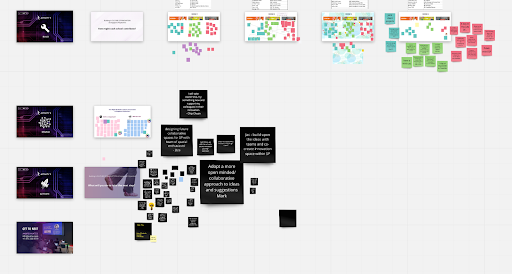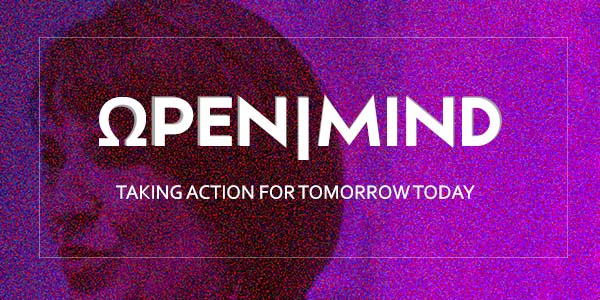Transformation—whether at a corporation, a small company, a startup, a university, or a nonprofit—requires a swing between bursts of inspiration and spadework.
Here’s a guide to the best way to do powerful sprints (with bursts of inspiration) in parallel with the longer-term spadework of creating an infrastructure that will sustain powerful change.
Inspired by leaders in Singapore who set a high bar for sprints that stick.
Sprints are Great. But Not Enough.
A big part of the work to bring an organization to a higher level of relevance and impact is the juicy excitement that comes from co-creation sessions, ideation, brainstorming, and what-if inspiration. Based on the rhythm of software development, sprints are structured sessions that bring a team together to build initiatives bigger and bolder by collectively focusing on various aspects of a specific challenge with intensity and a short-term goal of producing a tangible deliverable—a prototype for the next stage of a product or a clear blueprint of next steps around a critical decision.
Having led a fair share of sprints that worked and some that didn’t, I came to appreciate the qualities that separate the sizzle from the staying power. The truth is, we need to be able to sprint well and also create infrastructure well to drive an initiative that lasts. And, in a recent residency in Singapore, I got to experience the formula that drives staying power.
In Singapore, it starts with a well-orchestrated exchange among corporations + universities + global innovators. It’s that interconnected infrastructure that matters most.
How does a growth-oriented, diverse, innovation-forward community learn to build bold initiatives that become real?
I’ll tell this story backwards, because it’s so easy to feel the power of a sprint and believe in magic. As if the leadership of a single workshop is what drives the creation of a big vision.
That’s what it felt like when I worked with Soo Yin Tang, Centre Director of Singapore Polytechnic’s User Experience Centre, Yen Yen Tan, Aznan Abu-Bakar, Jaylin Yeo, and 50 of their peers on a cross-disciplinary sprint recently. We focused on galvanizing a new initiative fueled by the strengths of Singapore Polytechnic’s university communities + designed to address the emerging needs in the corporate world.
A Sprint Is A Powerful Process: Envision, Expand, Build
We started the sprint with a challenge statement: What might it look like to bring together the best of technology, corporate consumer insight, product design, and university resources to address the next critical challenge?
The first stage, “Envision”, yielded radically different ideas about what was changing in business and how the university + the business communities could collaborate with the greatest impact. 50 people Envisioned a future where universities had a more immediate connection to emerging consumer and societal needs and where businesses had a direct line to research.
The second phase, “Expand” landed on Speed to Insight as the superpower that would equip the university with the practical, market-driven data they need to inject their research with consumer relevance and at the same time speed up the application of academic research in the business world.
In the third segment, “Build”, the group framed a model for a learning exchange targeted at impossible problems and brought the right people into the room to make the Impossible to Possible initiative real.
People were energized, and it would have been easy to think that the spirit of excitement would be enough to carry the ideas forward.
But, it was the final stage of the sprint that made all the difference. Leaders closed the session with a roadmap of specific commitments for programming over the coming months that would be top priorities. They exposed the rich infrastructure they’d been constructing over time that would bring the Impossible to Possible initiative to life and drive staying power.
ToolBox
THE POWER OF SPRINTS IS ACTUALLY BENEATH THE SURFACE
Working backwards from the 50 person sprint reveals the true secret to the power of the Singapore Polytechnic User Experience Centre. Their leaders reinforce sprints with well-constructed mechanisms based on 4 truths of transformation.
🔷 Every sprint requires a great Petri dish.
In support of the sprint, there’s a network of activities like the DT/UX (Digital Transformation/User Experience) conference that bring global experts to Singapore, fueling new ideas on what’s possible. Over time, the conferences have built a strong and interconnected community of changemakers. That changemaker community serves as a perfect medium to incubate, cross-fertilize and accelerate progress on novel ideas.
➡ ANDREA’S KEYNOTE DTUX conference here
🔷 Prototypes become real when the people who can make it big have skin in the game.
In Singapore, corporate labs and university partnerships like the P&G Live Well Collaborative translate sprint prototypes to commercial or high-impact applications.
➡ P&G Brings Live Well Collaborative to Singapore
🔷 Leaders who step forward set the tone for true commitment.
Sprints need punchlines—a moment when all of the enthusiasm of the crowd translates into a clear action plan with funding, timelines and budget.
The Impossible to Possible Day could have been a catchy slogan if it hadn’t been for the commitment of top leaders to bring the results of the sprint to the next level. Never end a sprint with a wrap party. End a sprint with elbow grease—the logistics required to make the initiative an operational priority.








